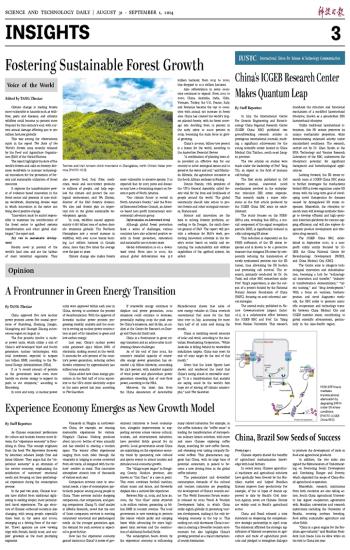
China approved five new nuclear power projects across five coastal provinces of Shandong, Zhejiang, Jiangsu, Guangdong and Guangxi Zhuang autonomous region on August 19.
The five projects involve 11 nuclear power units, which utilize a mix of China's self-developed third and fourth generation nuclear technologies, with total investment expected to surpass 240 billion RMB, according to the National Energy Administration (NEA).
It is "a record amount of permits as the government leans even more heavily on atomic energy to support its push to cut emissions," according to Bloomberg.
In 2022 and 2023, 10 nuclear power units were approved within each year in China, striving to accelerate the process of decarbonization. With the approval of domestic nuclear power projects progressing steadily, analysts said the country is revving up nuclear power construction as part of its transition to green and low-carbon energy.
Last year, China's nuclear power units generated 433.4 billion kWh of electricity, ranking second in the world. It accounts for 4.86 percent of the country's power generation, reducing carbon dioxide emissions by approximately 340 million tons annually.
China added new clean energy generation in the first half of 2024 equivalent to the UK's entire electricity output in the same period last year, according to The Guardian.
If renewable energy continues to displace coal power generation, 2024 emissions could continue to decrease, potentially making 2023 the peak year for China's emissions, said Qi Qin, an analyst at the Centre for Research on Energy and Clean Air think tank.
China is a frontrunner in green energy transition and an action-taker in addressing climate challenges.
As of the end of June 2024, the country's installed capacity of renewable energy power generation has exceeded 1.65 billion kilowatts, accounting for 53.8 percent, with installed capacity of wind power and photovoltaic power generation exceeding that of coal-fired power, according to the NEA.
Moreover, the latest data from the China Association of Automobile Manufacturers shows that sales of new energy vehicles in China overtook conventional fuel autos for the first time ever in July, accounting for more than half of all units sold during the month.
China is installing record amounts of solar and wind, according to the Australian Broadcasting Corporation, "While Australia is falling behind its renewables installation targets, China may meet its end-of-2030 target by the end of this month."
Given that the latest figures have shown and reinforced the trend that China's racing ahead in renewable energy, "It is a transformation that analysts are saying could be the world's best hope yet of staving off climate catastrophe," said The Guardian.


 Next
Next




